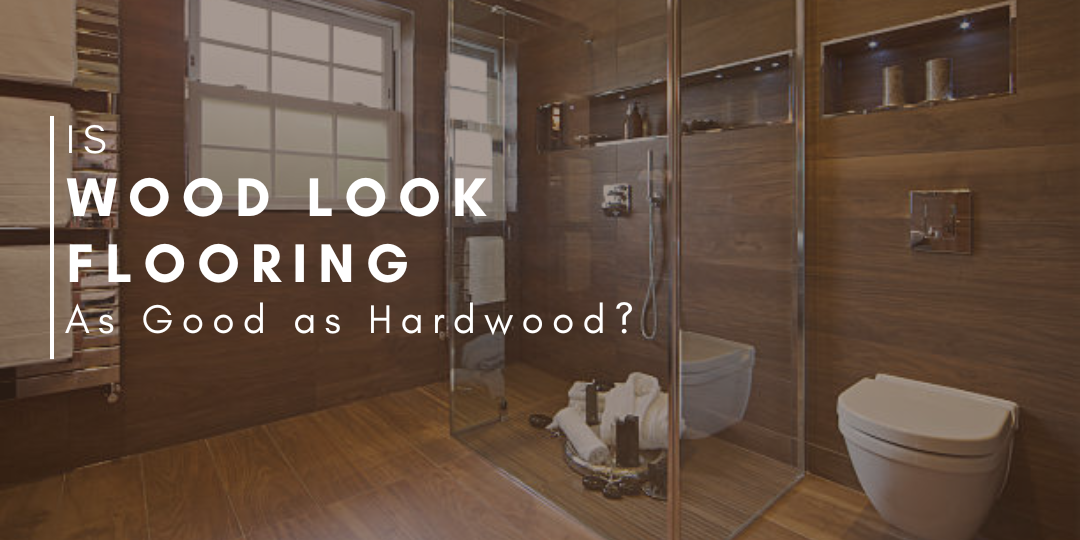Choosing between genuine hardwood and wood-look flooring is often tricky. Wood look floors, including wood look tiles, luxury vinyl planks, and laminate, promise the visual appeal of solid wood without the higher cost and maintenance. But are they truly comparable? Let’s take an honest look at each option, weighing its advantages and drawbacks to help set realistic expectations.
Understanding Wood Look Flooring
What Exactly is Wood Look Flooring?
Wood-look flooring refers to synthetic or ceramic options designed to resemble wooden floors. There are three main types to consider:
-
Wood Look Tile: Typically made of porcelain or ceramic, these tiles that look like wood offer impressive durability and moisture resistance.
-
Wood Look Vinyl: Available as Luxury Vinyl Tiles (LVT) or Luxury Vinyl Planks (LVP), vinyl flooring provides realistic wood effects with added softness underfoot.
-
Wood Look Laminate: Constructed from composite wood materials, laminate flooring replicates the appearance of hardwood convincingly but with different structural characteristics.
What Makes Hardwood Unique?
Genuine hardwood flooring, whether solid wood or engineered wood, has distinct advantages. Each wooden plank displays unique grain patterns, natural warmth, and a tactile feel that synthetic materials struggle to replicate fully. Hardwood’s visual depth, coupled with its potential to enhance home value, often justifies its higher price tag.
Realistic Comparisons & Expectations
Appearance & Authenticity
When it comes to authenticity, solid hardwood naturally excels. Each plank has a unique look, ensuring no two floors appear identical. While wood look flooring—such as porcelain or ceramic tiles—can convincingly mimic the appearance of real wood, careful observers may notice repetition in patterns.
Luxury vinyl planks and wood look laminate have significantly advanced in visual accuracy, yet they might lack the subtle textures and grain depth characteristic of real wood floors. However, these synthetic options are increasingly popular for spaces where aesthetics and practicality need balancing.
Durability and Resistance
Durability varies widely among flooring types, influencing long-term satisfaction.
Hardwood provides unmatched elegance but is susceptible to scratches, dents, and moisture damage. The good news is, real hardwood can be sanded and refinished multiple times, substantially extending its lifespan.
Porcelain and ceramic wood tile floors offer exceptional resistance to moisture, scratches, and heavy foot traffic, making them perfect for kitchens and bathrooms. However, their hard, unforgiving surface might be uncomfortable for prolonged standing.
Luxury vinyl tiles (LVT) and luxury vinyl planks (LVP) perform remarkably well in moisture-prone environments. Although resilient, vinyl may sustain damage from sharp objects or heavy furniture.
Laminate flooring offers a durable surface resistant to scratches and general wear but has limited resistance to moisture, making it less suitable for humid areas.
Maintenance and Longevity
Hardwood flooring requires consistent care, including routine cleaning, protective coatings, and periodic refinishing to maintain its appealing look. Excessive moisture or humidity fluctuations can also pose significant risks.
By comparison, wood effect tiles are notably easier to maintain. Regular sweeping and mopping are usually sufficient. However, grout lines might require additional attention to prevent discoloration over time.
Luxury vinyl planks are similarly low-maintenance, needing only basic cleaning. Yet homeowners must avoid harsh chemicals that could damage the protective layers.
Laminate flooring requires simple routine cleaning and moisture management but cannot be refinished—damaged areas often necessitate replacement.
Comfort and Feel
Comfort underfoot is another critical consideration. Solid wood floors provide a warm, inviting surface, naturally insulating homes in colder climates.
In contrast, porcelain or ceramic wood tiles typically feel cold and hard. To counteract this, homeowners often use area rugs in high-traffic spaces.
Luxury vinyl planks, meanwhile, deliver a softer and warmer experience compared to tiles, making them comfortable for daily living.
Laminate flooring, though practical, tends to feel slightly harder and can generate a hollow sound underfoot without proper underlayment.
Cost & Investment Value
Budget significantly impacts flooring decisions. Solid hardwood commands the highest initial cost but notably enhances property resale value, making it a worthwhile investment for many homeowners. Its refinishable nature also promises exceptional long-term durability.
Conversely, wood look flooring—such as laminate, vinyl, or porcelain tile—presents a more budget-friendly alternative, appealing to cost-conscious buyers. While generally less impactful in raising property values compared to real hardwood, selecting high-quality wood-effect materials can still add meaningful appeal and practicality.
Installation Considerations
Installing hardwood typically demands professional help due to precise cutting, fitting, and finishing requirements, thus increasing overall project costs.
Wood look tile flooring also requires precision, particularly in laying and grouting, and is usually best handled by skilled DIY enthusiasts or professionals.
Luxury vinyl planks are notably DIY-friendly, thanks to easy click-lock or peel-and-stick installation methods. Laminate flooring similarly offers straightforward click-lock installations, appealing to moderate-level DIYers.
Environmental & Health Impacts
Solid hardwood sourced from sustainable forestry practices represents an eco-friendly choice. However, environmental impacts vary based on harvesting and transportation methods.
Vinyl and laminate flooring sometimes emit volatile organic compounds (VOCs). Selecting certified low-VOC products ensures healthier indoor air quality.
Porcelain and ceramic wood tile floors typically present minimal environmental concerns, as they're often produced from recyclable, sustainable materials, minimizing their ecological footprint.
Real-Life User Expectations
When to Choose Hardwood
Consider genuine hardwood if:
-
You value authenticity and distinctive visual texture.
-
You’re prepared for higher initial costs and regular maintenance.
-
You want long-term investment potential, especially in high-value property markets.
When Wood Look Flooring Makes Sense
Wood effect options like vinyl, laminate, or ceramic are suitable if:
-
You're looking for affordable flooring that mimics hardwood aesthetics.
-
Your home experiences high foot traffic, children, or pets.
-
You’re seeking low-maintenance floors resistant to moisture and everyday wear.
Is Wood Look Flooring Worth It?
Ultimately, the choice between hardwood and wood look flooring hinges upon personal priorities—budget, lifestyle, room-specific needs, and maintenance willingness. Solid hardwood remains unmatched in natural beauty and long-term value, but wood effect alternatives offer practical, attractive solutions for busy households or cost-sensitive projects. Realistically setting your expectations ensures a flooring decision that satisfies both visually and functionally, now and in the future.
FAQs
Q) What is wood look flooring?
A) It’s a type of flooring designed to resemble hardwood but with different care needs and durability.
Q) Which is better for kitchens and bathrooms: tile or hardwood?
A) Wood Mimic Floors are often the better choice for moisture-prone areas because it resists water and wear more effectively.
Q) Does vinyl flooring feel like real wood?
A) Vinyl planks can feel softer and warmer underfoot than tile, but they don’t fully capture the natural texture of real wood.
Q) Are wood effect floors good for homes with pets or kids?
A) Yes. They’re often more resistant to scratches and spills, making them a practical choice for busy households.


